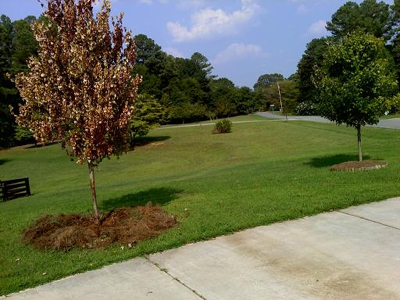Secrets for Beginner Gardeners
Warm weather the last couple of weekends really brought out the gardening masses! I visited three different garden centers one weekend and found all of them packed. I was in line behind a young couple one Saturday and overheard their conversation.
“Do you think they’ll live?”, the wife asked nervously, eyeing a six-pack of tomatoes. “I guess so,” replied the husband. “Other people grow them and I don’t see why we can’t too.”
I inwardly admired their courage. They were beginning an adventure together. Perhaps their tomatoes will live, perhaps they won’t. My main hope is that, no matter what happens, they will try again until they do have success.
I thought about starting a conversation with them and sharing my three secrets for success in the garden. The cashier was quick, however, and they were out the door before I could think of how to give advice without being a bore. Instead, I decided to share my secrets with you, hoping that everyone who longs to be a good gardener will profit.
START SOMEWHERE Great cooks don’t become so by making macaroni and cheese from a box. You practiced long and hard in your parents’ car before you were ready to hit the highway. Successful gardeners don’t become so without experience. In the past they started a few annuals, planted some seeds, pruned a bush or dug weeds from their lawn. Each completed task gave them confidence to try another. They had failures. They had successes. Either way, they gained experiences that taught them what to do or not do in the future.
A basketball player will practice his jumpshot thousands of times. Some shots will go in. Some will bounce off the rim. Some will fly over the backboard. Still the ballplayer practices, confident that eventually his successes will outnumber his failures. Gardening is no different. Keep at it and eventually you’ll learn something.
COPY OTHER FOLKS One year I invited Tara Dillard, host of “Better Gardening” on Channel 46, to show me how to design a mailbox planting. We labored long and hard digging up the soil. She installed the tough ‘Bath’s Pink’ dianthus, liriope and evergreen clematis Clematis armandii. Her finishing touch, though, was not what I expected. She used composted pine bark to mulch the mini-landscape rather than the pine straw I suggested. “It looks ragged and hides the plants”, Tara maintained. “The solid brown of the mulch makes them stand out much more.”
My stars! I’ve been using pine straw and mini-nuggets for years…….but she was right. Good gardeners duplicate good plants and copy good practices whenever they see them. If you like a particular landscape, photograph it and clone it in your front yard, down to the last begonia.
FEED YOUR SOIL Our first impulse is to feed plants copiously, thinking that fertilizer will solve all problems. Planting a new tree? Give it some fertilizer! Yellow leaves on your azalea? Feed it right now! Magnolia not blooming? Grab a bag of bloom maker! In truth, fertilizer rarely solves problems. Sometimes it can cause problems, by making plants grow so fast they are attacked by insects or diseases looking for a lush lunch.
Giving plants a long and trouble-free life means feeding their soil with organic material, not fertilizer, every chance you get. Soil scientist Karl Glasener points out that organic amendments decompose to form organic matter. Organic matter is the “glue” that holds soil particles – – sand, silt and clay – – together to build and improve soil structure. A soil with good structure is a healthy soil. It holds water, has a good mix of oxygen and carbon dioxide and a thriving microbial population. To put it on kindergarten level, happy soil means happy plants.
The three secrets I’ve shared with you are hardly earth-shattering. You might think that accomplished gardeners have many further secrets. Most though, would assure you that there are hardly any secrets to gardening. If you simply start somewhere, look for good ideas and keep your soil healthy you’ll shoot three-pointers in your garden all year long.
















